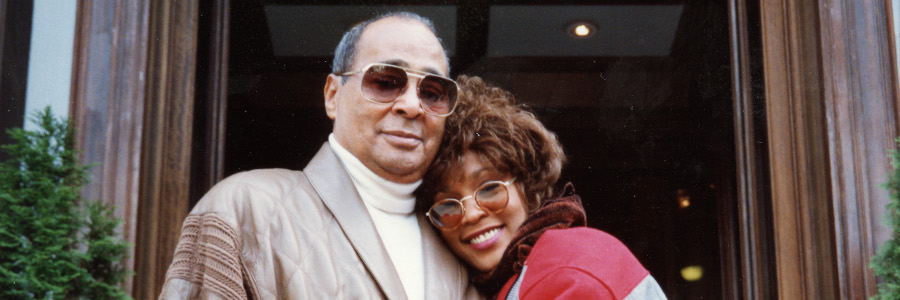Whitney is not the story of one of the greatest, and most successful musicians of the 20th century. It is the story of the woman within that artist – the woman best known to those that loved her as Nippy – whose passion, skill, and torment defined a legacy celebrated as much today when she died six years ago.
The two aspects of Whitney Houston – artist, and woman – might seem indistinguishable, but from scene one, director Kevin Macdonald sets out to reveal this wasn’t the case. As mesmerising shots of Houston performing in her music video for I Wanna Dance with Somebody play out on the screen, we hear an interview in which she recalls a recurring dream that sees her being chased by a giant man. The man, her mother tells her, is the devil, coming for her soul.
“When I wake up, I’m always exhausted.”
Over the following two hours, Macdonald takes us through the highs and lows of Houston’s life – from eating dinner on the floor to avoid being hit by stray bullets during the Newark race riots, to the set of Sparkle, the film she produced and acted in mere months before her death – guided by discussions with friends and family members.
These discussions are what makes Whitney stand out amidst the torrent of content produced about Houston over the last few years, and gives it the ultimate edge over Showtime’s 2017 documentary Whitney: Can I Be Me?
Frank conversations, including one in which Houston’s brothers show no hesitation admitting that they were the ones who introduced their teenaged sister to drugs, and the use of never before seen home video reveal the icon’s path to self-destruction was far more gradual than assumed by media and the public.
Houston struggled to maintain the balance between her personal and professional identity, and the more time passed, the more the former found itself strangled by the latter. In one scene, a weary Houston sits smoking and talking to herself. She’s asking Nippy – the ‘real’ version of herself – to appear, and help her overcome her pain. But Whitney, she turns to tell the camera, can’t make Nippy appear. It’s impossible.
Such moments are deeply emotional, and never feel exploitative. Instead, it’s evident that just about everyone involved in the production appears on screen solely to ensure Whitney is as comprehensive and honest in its depiction of Houston as possible. The only exception is ex-husband Bobby Brown, who refuses to acknowledge that drug use is a relevant point of discussion. He’s defensive, and despicable.
It’s not Brown’s obstinance that holds the documentary back from being truly comprehensive, however. That is a result of the notable absence of Robyn Crawford, Houston’s former closest friend and, like many of those closest to her, employee.
Rumours surrounded the extent of their relationship in both public and private circles, in no small part due to Crawford’s open homosexuality. It would be easy to dismiss the accusations as gossip – as Houston herself attempted to in interviews – if not for a critical revelation near the end of the documentary. The childhood trauma this revelation centres on appears to have triggered a lifelong struggle with identity that fueled Houston’s self-destruction.
The reason for Crawford’s absence is unclear (though she has avoided the public eye for some time), and serves to raise questions that it feels Whitney was designed to bring an end to.
Still, Whitney is a documentary that will tear at the hearts of fans and, perhaps, even bring tears to the eyes of viewers with just a minor interest in Houston’s life. It’s hard not to be moved, whether by her struggle, or the overwhelming power of her voice in occasional performance scenes that remind audiences exactly why so many mourn for her to this day.
—
Whitney opens in Australian cinemas on July 26th.

